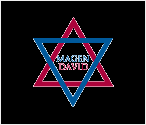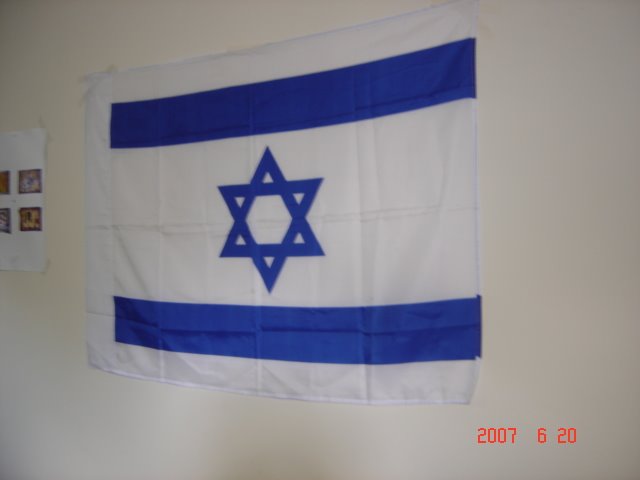
New York City Mayor Michael Bloomberg, his 98 year-old mother Charlotte Bloomberg, daughter Emma Bloomberg, sister Marjorie Tiven, and NYC officials broke ground for the rebuilding of the Magen David Adom (MDA) Emergency Medical Station in Jerusalem on Thursday, February 1. The Station, which was built in Romema, Jerusalem in 1963 and expanded in the early 1970s, will be named in memory of the Mayor’s father, William H. Bloomberg.
Later in the afternoon, Mayor Bloomberg and his party met with Prime Minister Ehud Olmert and Acting President Dalia Itzik, who thanked him and American Friends of Magen David Adom (AFMDA) for undertaking this important project.
Speaking at the morning ceremony, attended by over 200 guests including Jerusalem Mayor Uri Lupolianski, Director General of the Ministry of Health Prof. Avi Israeli, AFMDA President Mark Lebow, MDA Director General Eli Bin and Executive Committee Chairman Noam Yifrach, Mayor Bloomberg said, “In Israel, and in New York, supporting the work of our First Responders is one of the most important things we can do. And I feel sure that my father, if he were here today, would agree,” Mayor Bloomberg said. “My father taught me the importance of giving back, and I’ve tried to follow his example and give what I can to those organizations working for the good of all. The MDA – which serves all citizens regardless of religion, creed, or nationality – is definitely one such organization, and I think my father would be very proud to be a part of its work. I’d like to thank the American Friends of Magen David Adom for giving my family this opportunity to make a difference. It gives my sister and me tremendous satisfaction to know that my father’s name – and that of my mother – on a hospital wing at Hadassah Hospital – will live on together in Israel forever.”
“American Friends of Magen David Adom thanks Mayor Michael Bloomberg for taking the lead in helping us to rebuild Israel’s busiest and most important MDA Station and naming it in memory of his beloved father,” said Daniel R. Allen, Executive Vice President of American Friends of Magen David Adom. “Our organization is proud that Mayor Bloomberg has joined with us in this important project.”
The William H. Bloomberg MDA Jerusalem Station will be the “flagship” of Magen David Adom’s network of facilities in Israel, serving the nation’s capital and its largest andmost visited city.
The renovated Station will include new pedestrian walkways, access roads and separate parking levels for automobiles and MDA service vehicles.
The entire main building will be upgraded and public access will be dramatically improved. The entire facility will be handicapped accessible and in compliance with all fire and environmental regulations.
A spacious and comfortable new state-of-the-art Blood Collection Center will feature breathtaking views of the valley below and there will also be a Conference/Reception Hall, Donor Museum, Donor Recognition Wall, Visitors’ Center, Archives, Rooftop Atrium and Observation Deck as well as a garden and ground level patio.
The Terem Clinic, which partners with MDA Jerusalem onprojects although they are not formally affiliated, is an important provider of pre-hospital and clinical care for Jerusalem’s residents. This facility will also be rebuilt and upgraded.
In addition to new quarters for the crews, classrooms, offices and meeting rooms, there will be a new GPS (Global Positioning System) Control Room on the operations and ambulance level to dispatch and manage MDA Jerusalem’s fleet of emergency vehicles.
Additional naming opportunities are also available at the William H. Bloomberg MDA Jerusalem Station.
AFMDA AMBULANCES ON THE WAY!
A shipment of 17 ambulances from American Friends of Magen David Adom arrived in Ashdod, Israel last week. The vehicles, which were built in Elkhart, IN, departed from a U.S. port in early October and are now being outfitted by MDA before being assigned to Emergency Medical Stations throughout Israel.
The standard ambulance, also known as the "Basic Life Support Ambulance" or BLS, is designed to handle non-critical emergency patients that require a relatively low level care. The unit is also generally deployed to transport non-critical patients from one medical location to another. The standard ambulance is also equipped to handle more advanced emergency needs, if necessary..
The “Mobile Intensive Care Unit” or MICU ambulance is an advanced trauma life support unit. This vehicle carries such equipment as a cardio monitoring system, heart defibrillator devices and intubation/exasperation devices. The unit is much larger in size than the standard vehicle. It has the capacity to house in field medicines and a medical staff of a doctor, paramedic and a nurse.
American Friends of Magen David Adom – ARMDI is the authorized organization supporting the life saving efforts of MDA in Israel and representing Magen David Adom in the US. Magen David Adom (MDA) is Israel’s only government-mandated ambulance and emergency medical responders, serving as the nation’s second line of defense with medical, disaster, ambulance and blood services.
Thanks to AFMDA/ARMDI supporters, more than 700 MDA ambulances and Mobile Intensive Care Units are on call 24/7, operating from over 100 Emergency Medical Stations and 11 dispatch stations throughout Israel, logging more than 5.65 million miles and taking care of 600,000 patients annually. MDA also provides 95% of Israel’s blood needs and has launched the MDA Israel Cord Blood Bank.
During the 2006 Lebanon war, MDA was on full alert, responding to more than 1,500 lifesaving incidents, treating 2,600 people, collecting and supplying 32,000 blood units for civilian and military casualties and providing food, water, toys and comfort for Israelis in bomb shelters.
SDEROT: MDA RESPONDS TO QASSAM ATTACKS AS AFMDA BEGINS CONTRUCTION OF NEW STATION
Despite a ceasefire which went into effect at 6 a.m. Sunday morning, November 26, 2006, Magen David Adom remains on high alert in Sderot and throughout the border area with Gaza. More than 70 Qassam rockets have been fired from Gaza at the western Negev since the ceasefire "began," most of which landed in or near Sderot.
Two teenagers were wounded on December 26 when a Qassam slammed into the city while they were walking home from school. Thanks to MDA’s quick response, Adir Basad and Matan Cohen were treated and rushed to Ashkelon’s Barzilai Hospital where a series of emergency operations stabilized Adir and saved Matan from losing his leg.
Work has begun on the new Sderot MDA Emergency Medical Station. The new facility, being built by American Friends of Magen David Adom, will replace the existing structure which has been declared a hazard by the municipality. There is an urgent need to build a new fortified station with thicker walls and reinforced roof due to heightened security concerns arising from the frequent Qassam rocket attacks and constant shelling and mortar rounds from the Gaza Strip.
Sderot lies only a kilometer from the Gaza Strip, and it is a target for constant shelling by mortar bombs and Qassam rockets by Palestinian militants.
The Sderot MDA Emergency Medical Station is the closest Station to the Gaza Strip. It serves the city of Sderot and the surrounding communities, moshavim and kibbutzim. utilizing three Standard and three Mobile Intensive Care Unit (MICU) Ambulances, operated by eight medics (drivers), eight paramedics and 20 volunteers.
More than 200 people have been injured by Qassam rockets fired from the Gaza Strip into Sderot and nearby communities during 2006 and the Sderot MDA Station has been on constant high alert throughout the year.
This was more than double the number for the entire 12 months of 2005, when 85 people suffered injuries.
Over the last five years, to date, Qassamim have claimed the lives of 10 residents and Magen David Adom has attended to over 400 injured Israelis.
MDA ADDS HELICOPTERS TO FLEET OF EMERGENCY VEHICLES
Two red and white helicopters, complete with paramedics are scheduled to join Magen David Adom (MDA) and work in coordination with its fleet of ambulances to assist with patient evacuation to hospitals.
MDA ran an EVAC try-out in the early 70’s after an overseas Friends Society donated an Aloette model light helicopter to the organization, but the concept was discarded as MDA could not withstand the high operational costs.
MDA’s Director General, Eli Bin, has wanted to find a way to add a helicopter EVAC unit since he assumed the leadership of the organization.: “The operation of an EVAC unit will upgrade our services, minimize response times and patient transfer to hospitals, and in particular in peripheral areas which are far from municipal hospitals,” Bin said. “These areas have highways with fast moving traffic, no lane barriers and have been the scenes of many severe accidents. There is no other organization with the exception of the air force which can now provide a suitable response, especially during the festival seasons, when there is a marked increase in the number of injured vacationers in the countryside.”
Following a series of discussions which lasted a few months, an agreement was signed by MDA’s leadership and a representative of “Lahak” (a financial investment company), two red and white helicopters bearing the MDA emblem are scheduled to circle the skies with the IDF and police squadrons. To date, the air force has been responsible for the rescue and evacuation of civilians injured in terror attacks and traffic accidents. Air force officials have often stressed that it is not the military’s duty to rescue and evacuate civilians, and that their resources should be used only for the evacuation of soldiers from enemy zones.
According to the agreement, “Lahak” will purchase the helicopters, recruit and employ the pilots and maintain the MDA helicopters. MDA will allocate the paramedics and dispatch services. The paramedics, who received their qualifications in the air force’s rescue unit and have accumulated many hours of experience, will receive further training in helicopter management and special rescue/evacuation skills. The helicopters and equipment used by the EVAC team is the most advanced used worldwide.




